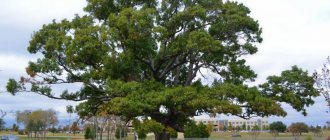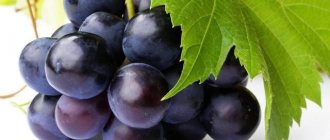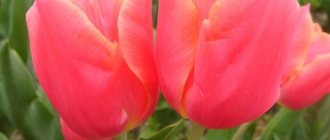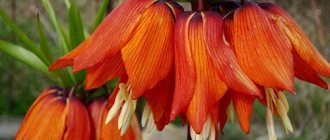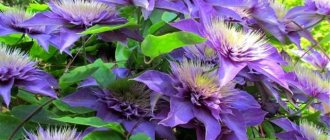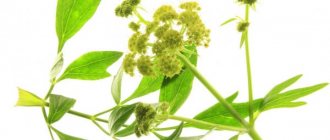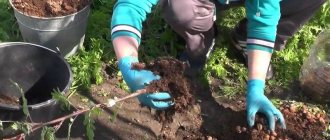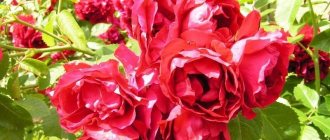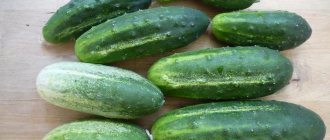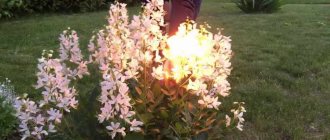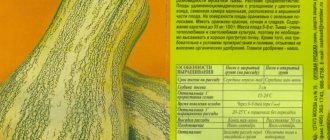Places and growing conditions
This plant is found preferably in forest-steppes and steppes, as well as on river banks of the European part of Russia, in Ukraine, in the foothills of the Caucasus, in Central Asia, Siberia and Kazakhstan, where entire thickets of bushes grow.
As an ornamental and fruit plant, Eleven angustifolia is bred in parks and gardens; as a result of selection, this crop has quite large fruits. Its silvery foliage adorns parkland.
Elf angustifolia grows quite quickly, about a meter annually. After 4 years, silvery pubescent side shoots appear. Propagated by cuttings, seeds and offsets.
Elf silver berries are edible. Types of vitamin bush
Silver sucker is not new to our latitudes, but its spread to garden plots and city parks is still slow. The reason can be considered its thorniness and small fruits; moreover, not enough is known about the benefits of its leaves, flowers, and berries.
There are several names for this beautiful plant:
- scammer;
- wild olive;
- Jeddah;
- silverfish;
- silver berry;
- when;
- pshat.
sucker;
Botanists count about 40 of its species, both trees and shrubs, all of them very decorative. Breeders determine the following basic forms:
- Silvery, coming from the east of the continent of America.
- Gummy or multi-flowered, with tasty red berries, an alien from Japan and China.
- Narrow-leaved, a lover of heat, grows in the south of Russia, Kazakhstan, the Caucasus, and Central Asia.
- Umbelliferous has the healthiest berries and is common in East Asia.
- The prickly one first appeared in Japan. It is distinguished by brownish-red fruits, especially beautiful in autumn.
- Golden, recognizable by the yellow stripe along the leaf, is the most popular and widespread species of silver oleaster.
Silver oleaster is a plant that is interesting in all respects. Man uses almost all of its parts - fruits, leaves, bark, roots in cooking, in medicine, and the entire plant as a design object.
Lokhovnik is a tree-like thorny shrub, a deciduous honey plant that remains decorative in winter and warm weather. The leaves are silvery on both sides all season and fall in late autumn. Silver oleaster is an unpretentious plant, frost-resistant, takes root well in mid-latitude conditions, and does not require special attention in the garden. The crown is medium spreading, growth is rather slow - during the year the tree adds about 15 cm. Loves open sunny places.
Silverweed blooms in early summer with yellow, medium-sized flowers that emit a strong aroma that attracts bees. The gum bush's bloom lasts about 20 days, leaving behind oval or spherical fruits. The berries of the lochovnik are unusual, covered as if with silver scales, mealy, sweet.
Description of the plant
The trunk of the oleaster, covered with brown bark with 3-centimeter spines (which are not found in cultivated forms of the plant), bends during rapid growth. The plant has a powerful and strong root system that adapts to any soil (even sandy and highly saline) and moderately moist soil, and can withstand droughts. It is unpretentious to city dust and air pollution, but is afraid of frost.
The leaves of the oleaster are oval, lanceolate, similar to laurel leaves, gray-green above and white below, covered with small scales. They are attached to the trunk using 5-6 cm petioles narrowed to the base.
A three- to five-year-old plant begins to bloom and bear fruit. The flowers are single, small, orange-yellow on the inside and silver-gray on the outside, located in the axils of the leaves, and have a strong aroma. The plant begins to bloom in June, flowering continues for 3 weeks.
In August, the fruit begins to ripen in the form of an oval-shaped orange drupe, about 1 cm long and weighing 3 g with a stone inside. Full ripening of fruits is favored by prolonged warm weather. The fruits have an astringent sweet taste and are of great nutritional value. They are easy to harvest as they have a long, thin stalk. The fruits are stored for quite a long time; at room temperature they can be kept all winter.
Plastic
Photo by the author
Loch is an unpretentious, drought-resistant shrub 1.5-2 m high, with a spreading or pyramidal crown, can grow even in partial shade, on poor soils. This is a very flexible plant that easily adapts to different conditions and different types of soil. Elf is relatively frost-resistant; it is recommended to grow it from zones 4 to 9. However, to obtain decent yields (up to 6-8 kg per bush), it needs to be provided with a favorable place - sunny, well-warmed, protected from the cold wind, with fertile, loose soil without stagnant water. Sucker responds well to the application of complete mineral fertilizer and ash, but can grow without fertilizing.
The roots of the oleaster are superficial, fibrous, located in the projection of the crown, and deepen by 40-50 cm. The plant belongs to the group of nitrogen-fixing plants; on its roots there are nodules with bacteria that are capable of absorbing atmospheric nitrogen.
It is better to plant sucker in the spring; it is enough to add humus, turf soil and sand in equal quantities to the planting hole, as well as complex fertilizers 200-300 g. Mix the fertilizers thoroughly with the soil so that they do not come into contact with the roots. In the future, it is enough to weed and shallowly loosen the soil around the bushes, periodically give spring feeding
Useful properties and applications
The plant is planted to strengthen dams, forest belts, and rivers. On the roots of the oleaster there are nodules with nitrogen-fixing bacteria, which help improve even the most depleted and poor soil.
The bark and leaves are used in the process of dyeing and tanning leather, and the resin is included in varnishes and paints. Furniture and musical instruments are made from wood.
Fresh berries of Eleven angustifolia are eaten . In the Caucasus and Central Asia, food is prepared from the fruits of the plant, the dried fruits are ground into flour, which is used for cooking jelly, baking gingerbread and other baked goods, added to other fruits when cooking compotes, and spiced wine is made from them.
Tea brewed from oleaster flowers with the addition of a small amount of leaves turns out to be very aromatic: it is rich in vitamins, has a tart but delicate taste, and is slightly oily.
Eleven angustifolia flowers have a strong aroma. The honey that bees collect from it is amber in color with a pronounced sweet smell and pleasant taste.
The fruits are used in medicine: the drug pshatin is made from them - a binding agent in the treatment of the digestive system. Even short-term oral administration helps improve the general condition and improves the function of the gastrointestinal tract. Rinsing with pshatin helps cure inflammatory diseases of the oral cavity.
An infusion of freshly ripened oleaster fruits is taken as a homeopathic remedy. The medicinal properties of Eleven angustifolia are successfully used for inflammatory processes, heart disease, respiratory tract diseases, rheumatism, gout, and hypertension. It removes parasites from the body and is used as a wound-healing substance.
The drupe of the tree contains:
- sugar;
- natural monosaccharide fructose;
- protein responsible for construction processes in the body;
- phosphorus, which ensures the growth of bone and dental tissues;
- salt;
- tannin (tannic acid), used to remove toxins;
- organic acids;
- coloring matter.
The leaves contain ascorbic acid, the bark contains alkaloids, tannins and dyes, and the flowers contain essential oil, which is successfully used in aromatherapy for heart disease.
Loch berry. Gummi (Elephant multiflorum) is a berry of five flavors.
The taste of its berries is an exquisite mixture of aromas of grapes, cherries, currants, apples and bird cherry.
The nectar collected from it is converted by bees into unusually fragrant and healing honey. In Japan, children receive its fruits as a mandatory (free) general strengthening vitamin and mineral supplement. The vitamin C content in its leaves is several times higher than in black currant leaves. And that's all about gummi! Guest from China.
Gummi is the closest relative of sea buckthorn. These plants are really similar both in the structure of the fruits and in the shape of the bush. And yet they are very different! The homeland of gum is central China, where it has been revered since ancient times as a mysterious, magical plant that gives strength and rejuvenates the body. Gummi grows well on Sakhalin - the island's residents grow it in their gardens and use it as a medicinal plant. It is also grown in Vladivostok, where it is more often called the “Lokh Multiflorum”, although it does not look like an ordinary elk. In recent years, this valuable plant has begun to appear in garden plots in the European part of Russia. So far, only the most enthusiastic lovers of new products and wonders grow gum. But this does not mean at all that the plant is not capable of gaining recognition and distribution in most regions of Russia. Moreover, taking into account the noticeable warming of the climate - which is important for gummi - and the exceptional value of its fruits, it can be predicted that it will successfully conquer new territories and many fans. The gummi plant fully fits into the seasonal cycle of central Russia: flowering usually occurs in a calm and frost-free time - early - mid-June, and the first fruits ripen already in mid-late July, sometimes at the end of August if the summer is cool and rainy. So this exotic plant will do well - if not in Arkhangelsk, then certainly in Pskov and Novgorod.
Why is gummi valued?
Gummi is a tree-like bush, up to 2 m in height, with light brown annual shoots, bright with many points. Its leaves are interesting - large, dense, ovate-oblong, usually bright green, distinguished by a silvery-metallic sheen on the reverse side, typical only for gummi. By the way, this is a good distinguishing feature for seedlings in the nursery. Nitrogen-fixing nodules form on gum roots. Its pleasant-tasting fruits have long attracted the attention of people, and for good reason: this multivitamin plant is in no way inferior in value to such a well-known crop as sea buckthorn. Gum contains many amino acids, including seven essential ones (such as aspartic, proline, lysine), carotene, tannins, fat, 6-9% sugars, up to 8% ascorbic acid, pectin. The bush is very decorative during flowering. Its flowers are elongated, bell-shaped, creamy-white with a unique aroma that attracts bees. Gummi is also an excellent honey plant; his honey is unusually pleasant and healthy. Another important advantage of gum is its ability to self-pollinate, i.e. you can get a good harvest with just one plant on your plot.
Vitamin on a long stem.
Gummi fruits are initially green, then turn orange, and in July they become bright red, covered with silvery dots, and look like dogwood or dates. Ripe dark red fruits look impressive against the background of foliage with a silver tint, which gives the shrub an elegant look. It’s a pleasure, because they are supported by thin long stalks. The shape of the fruit is cylindrical, their length is up to 2 cm, diameter is about 1 cm. Inside the fruit there is a small stone, soft, with a grooved surface, surrounded by dark red pulp, a very pleasant sweet and sour taste, very refreshing in the heat. To the author, the taste of the fruit resembles ripe persimmon or figs; I even love the seeds - their pulp is very pleasant to the taste. The Japanese have long valued gum fruits, using them to improve the cardiovascular system, gastrointestinal tract and as a simple vitamin and mineral supplement to food. In Japan, it is believed that eating gum fruits helps prolong a person's youth and longevity.
Where to buy seedlings?
Today, gummi seedlings are usually offered by private traders at a price of 100-300 rubles, depending on their size and age; in the central black earth region their cost is 100-120 rubles. Basically, seedlings are obtained by sowing seeds, but there are also rooted cuttings, which are more expensive. It is better to buy planting material from experienced gardeners who sell a lot of good quality seedlings, with a developed root system and 2-3 shoots. As for varieties, the author knows of only one remarkable Sakhalin variety - 1, obtained by G. s. Slesarenko in Yuzhno-Sakhalinsk by selecting elite plants among seedlings. The variety is distinguished by a pleasant taste of fruits, weighing up to 2.5 g, attractive coloring, higher winter hardiness and resistance to pests and diseases.
We choose a site and we prepare the soil.
It is best to plant gummi on elevated slopes facing south and near a residential building or country house, this will protect the plant from cold winter winds that can harm it. The soil needs to be dug deep, leveled with a rake, stones and weeds removed - the root system of the plant is superficial, fibrous, and soil preparation plays a significant role: it ensures further full growth of gum. Although this plant is unpretentious, it still requires neutral soil and does not like an excess of acid at all, so it is important to know the acidity level in your area. If it is high, it is necessary to add lime. Continuous liming sharply reduces the acidity level and promotes better mineralization of organic matter in fertilizers.
When and how to plant.
It is best to plant in early spring or late autumn, when there is plenty of moisture in the soil. Only if you plan to plant several plants, then the distance between the bushes in a row should be 2.5-3 m. The planting hole is prepared with a depth of up to 0.5 m and a width of up to 1.5 m. It is advisable to add a mixture of fertile soil (top layer) with compost, humus or sand, and pour drainage from pebbles and stones at the bottom. This is especially important on heavy clay soils, where water often stagnates and can destroy the root system. In order for the plant to develop well, it is recommended to add up to 30 g of nitrogen fertilizers, 200-250 g of double superphosphate and up to 700 g of wood ash to the soil mixture. When planting, the root collar of the seedling must be buried 5-8 cm, and after planting, be sure to water the plant and mulch the soil (top layer) with humus.
What is needed for high yields.
1 year after planting, annual fertilizing begins based on 1 bush: 8-10 kg of compost, 100-150 g of wood ash and 30 g of double superphosphate. In summer, liquid fertilizing with mullein or bird droppings is also desirable, based on 10 l/m2 of fermented and diluted 10 times organic fertilizer. In case of drought, plants are watered at the rate of 30-40 liters of water/m2; After watering, the soil must be mulched to retain moisture. It is necessary to cut out thickening, frozen and broken branches. Sometimes plants are “attacked” by aphids, which are usually saved by double treatment with a simple infusion of tobacco dust. In winter, it is advisable to cover the bushes with snow or brushwood to avoid freezing of the shoots.
Fruit processing.
Gummi fruits are possible and necessary! - Use both fresh and processed products. They decorate cakes, dry them and use them in decoctions or infusions. Jam is prepared from the fruits (though it turns out to be cloyingly sweet), ground with sugar (1.2 kg of sugar per 1 kg of fruit), usually through a stainless steel sieve - the result is a seedless jelly, similar to honey. In my opinion, the most delicious dessert is an assortment of berries made from sour fruits pureed with gum: gummi with sea buckthorn or gummi with sea buckthorn and felt cherries.
It is better to propagate from seed.
I note that this unpretentious plant reproduces quite poorly. Standard methods, such as layering, will not help here (which has proven itself ideal for most crops: layerings root with difficulty, and only in the 2nd year, and it is impossible to obtain good standard seedlings. From the limited literature on gum, it is known that it can be propagated by green cuttings in a greenhouse, but the author’s personal experience suggests the opposite. Even in a greenhouse equipped with a fog-forming unit, the number of rooted cuttings was ultimately no more than 10-12%. The only reliable and effective method, tested more than once in practice, is sowing seeds. They are chosen from ripe fruits and immediately sown in a pot or plastic bucket with a capacity of 5-7 liters with a substrate, which includes garden soil, humus, peat, sand, a little ash and bone meal, drainage is poured onto the bottom: a 2-3 cm layer of expanded clay or coarse river sand. After sowing the seeds, cover the pot with film and place it in a warm place until shoots appear. Shoots appear friendly and already in the first year the plants reach 1 m in height. The only condition is that young plants should stand in a bright place, but not be exposed to direct sunlight.
Instead of a conclusion.
Gummi deserves the attention of gardeners due to the amazing taste of the berries, their healing properties and high yield. The appearance of this plant in gardens, and its fruits on Russian shelves, can introduce a certain novelty into the diet and assortment of nurseries. N. Khromov.
Traditional medicine recipes
Remedies based on Eleven angustifolia are quite popular and are used in folk medicine for the treatment and prevention of various ailments .
Infusion of fruits
For 6 hours, infuse half a glass of oleaster fruit minced in a meat grinder in 2-3 glasses of cool water, strain, and brew the remaining mixture with two glasses of boiling water and mix everything. Take a couple of tablespoons before and after meals three times a day for digestive problems.
Article on the topic: Kalanchoe degremona - beneficial properties, description
Decoction of fruits or dried leaves
Brew 30 g of fruits or leaves with a glass of boiling water and simmer for half an hour in a water bath, then strain while hot through several layers of gauze, squeeze and bring the volume to the original volume. Drink warm before meals, 2 tablespoons three times a day for inflammatory diseases of the stomach and colon. This decoction can be stored in the refrigerator for a maximum of two days.
Infusion and tincture of flowers
It is used for diseases of the upper respiratory tract, to strengthen the heart muscle, for hypertension and as an antipyretic.
6 g of flowers are poured into a glass of hot water , left in a water bath for a quarter of an hour, and after squeezing and straining, bring the volume to the original volume. Take the infusion one third of a glass before meals three times a day.
To get a tincture of flowers, take 40-degree vodka, pour in oleaster flowers at a rate of 1:10 and keep warm for 10 days. The tincture is taken orally, 10-20 drops three times a day on an empty stomach.
Seed tincture
It is prepared in the same way. Use a tincture of seeds for skin rashes and feverish conditions.
The fruits of the oleaster, crushed together with plantain leaves, are used to treat hemorrhoids. The leaves are applied to stop bleeding in open wounds and are also used to treat non-healing wounds and ulcers.
Decorative forms of oleaster
A variety of Elf angustifolia is Elf prickly - an evergreen shrub up to 7 m high, with spreading branches and thick spines. Thanks to the long shoots, with the help of which the sucker clings to other plants, it can rise to a height of 10 meters, which is why it has earned the name of a climbing shrub.
The similarity between the spiny oleagin and the angustifolia is in the fruits, leaves and flowers.
In the south of Russia it is widely used in landscape design as a hedge and in a special spherical mold. They can be used to decorate fences, walls, fences. The prickly oleaster goes well with other evergreen ornamental plants - privet, aucuba, photinia, euonymus, holly, and is used as compositions with coniferous plants.
Elf angustifolia
Eleven angustifolia or eastern oleaster is a honey-bearing shrub or small tree of the Sucker family. It grows in forests, on forest edges, on the banks of reservoirs in the European territory of Russia, in the Altai Territory, Western Siberia, and is also found in Asia, Eastern Europe, and the Caucasus. It is an unpretentious and fast growing plant. It is planted in ornamental gardening in the form of hedges, as a water-protective and soil-strengthening plant (to protect forests, fields, and strengthen slopes).
The fruits of the oleaster angustifolia are eaten fresh, compotes are made from them, ground into flour, which is added to confectionery and even soups. Elder angustifolia is also used in folk medicine and homeopathy, in construction, leather and paint production.
Description and preparation
Elf angustifolia has gray (young - silvery) shoots, elongated lanceolate leaves, grayish-green above, silvery-white below. The bark is covered with spines (cultivated species may not have spines). The plant can reach up to 7 meters in height. In May-June (depending on the region), Eleven angustifolia blooms with white-yellow flowers located in the axils of the leaves. It begins to bloom at the age of 3-6 years. At the end of summer - beginning of autumn, the fruits ripen - spherical drupes with edible pericarp. Flowers, leaves, fruits and bark of Elf angustifolia are used as medicinal raw materials. Flowers are collected during the flowering period and dried in the shade or in an electric dryer at temperatures up to 40°C. Dried flowers can be stored for no more than 1 year. Harvesting leaves of Elegant angustifolia is carried out at the beginning of summer: they are collected and dried in a well-ventilated area or in a dryer at temperatures up to 50°C.
The leaves are stored for 2 years. The fruits are collected as they ripen and stored in a cool place for no more than 4 months. Unripe or rotten oleaster fruits should not be consumed.
Viability and durability
Photo by the author
The excellent restorative ability of the oleaster completely compensates for the main problem during cultivation - insufficient winter hardiness. The shrub overwinters well only under the cover of snow; the lower part of the plant remains stably intact. Before the onset of winter, the leaves do not always fall, and the wood may not ripen, so the shoots of the oleaster above the snow cover level usually freeze slightly. In warm winters, the shrub overwinters without problems, and over decades of observations in the conditions of Moscow (GBS RAS), the plants have never died. The sucker recovers well, shoots grow to a height of 40 to 140 cm, and about 10 new shoots appear annually. The shrub is durable and can grow in one place for at least 20 years.
You can avoid winter damage if, at the end of summer, you bend the partially lignified shoots to the ground and secure them at the base with pins, or tie them to stakes to create a stele shape. A layer of snow will provide good protection. It is not worth laying the shoots on the ground, but if they touch the soil, it is better to lay spruce branches or boards. It is undesirable to cover the bush tightly with film, without holes for ventilation, as the plant under it will suffer from damping out. If a snowless winter threatens, you can sprinkle the bushes with dry leaves and cover the top with lutrasil and film. Do not bend the sucker in late autumn, because... shoots are easy to break.
From our own experience, we can note that over 15 years of growing in the Moscow region without shelter and practically without care, we rarely had the sucker freeze, the harvest in these years was only on the lower part of the bush, but the plants were preserved and recovered perfectly.
Composition and properties
The fruits of the angustifolia oleaster are rich in: tannin, glucose, fructose, potassium and phosphorus salts, organic acids, proteins, ascorbic acid, nitrogen and coloring matter. Flowers are rich in copper, zinc, chromium and essential oil. Leaf leaves contain ascorbic acid in large quantities. The bark contains tannins, alkaloids, and dyes. Thanks to its composition, Eleven angustifolia has anti-inflammatory, astringent, enveloping, diuretic, antibacterial, expectorant, sedative and anthelmintic effects. In folk medicine, Eleven angustifolia is recommended for:
- colds, flu, fever;
- malaria;
- bronchitis;
- scurvy;
- hypertension;
- heart diseases;
- catarrh of the gastrointestinal tract, colitis and other diseases of the stomach and intestines;
- loose stools;
- rheumatism, gout, radiculitis;
- swelling;
- helminthiasis;
- insomnia;
- memory impairment (fetuses);
- inflammation of the oral cavity;
- purulent wounds.
- 10 g of Eleven angustifolia flowers;
- 250 ml boiling water.
Pour boiling water over the flowers and let sit until cool. Strain. Take 1 tablespoon 4 times a day. An infusion of flowers helps with hypertension, fever, colds with high body temperature, gout, rheumatism, edema, and heart disease. To prepare an infusion for heart disease, increase the number of flowers to 30 grams. Leaf infusion:
- 20 g crushed oleaster leaf;
- 250 ml boiling water.
For colds, flu, fever, radiculitis, gout, inflammation of the stomach and intestines, use an infusion of oleaster leaf. Pour boiling water over the leaves, let it brew for half an hour and strain.
Article on the topic: Liverwort - beneficial properties, description
Drink 50 ml three times a day after meals. Also, an infusion of the leaf can be used for rinsing and compresses (poultices, lotions).
- 30 g of oleaster angustifolia fruits;
- 1 tbsp. hot water.
Pour hot water over the fruits and boil in a water bath for half an hour under the lid. Strain the broth and add boiled water to the original volume. Take 2 tablespoons warm 3-4 times a day before meals. A decoction of the fruit helps with digestive disorders, loose stools, and intestinal inflammation. Decoction of flowers and leaves:
- 6 g of flowers and leaves of Eleven angustifolia;
- 250 ml hot water.
Pour the plant material with water and boil in a water bath for 15 minutes. Strain the broth and add boiled water to the original volume. Take 60 ml three times a day for edema, hypertension, fever, flu, scurvy. This decoction can also be added to therapeutic anti-inflammatory baths. Decoction for worms:
- 50 g of oleaster angustifolia fruits;
- 250 ml hot water.
Boil the oleaster fruits in water and let cool. Strain the broth. Drink after meals 4 times a day.
- 100 g of fresh Eleven angustifolia flowers;
- 1 liter of alcohol.
Fill the flowers with alcohol and place them in a dark, cool place for 20 days. Strain the finished tincture. Take 20 drops diluted in 100 ml of water once a day. The tincture is contraindicated for children under 12 years of age, the elderly and debilitated patients. It should be stored in the refrigerator for no longer than 20 days. Tincture for hypertension:
- 1 part of a leaf of Eleven angustifolia;
- 10 parts of 40% alcohol or vodka.
Pour alcohol over the leaves and let it brew in a warm place for 10 days. Strain. Take 15-20 drops, diluted in a small amount of water, three times a day before meals. This tincture can also be taken for colds. For rheumatism, a poultice is made from fresh leaves of oleaster: steam 100 g of oleaster leaf in boiling water for 15 minutes, and then apply to the sore spot for half an hour.
Pain relieving compress for gout and rheumatoid arthritis:
- 100 g of fresh leaf of Eleven angustifolia;
- 500 ml boiling water.
Pour boiling water over the leaves and simmer over low heat for 10 minutes. Strain. Use the decoction to make a compress. To heal purulent wounds, apply fresh leaves of the oleaginosa angustifolia to them and fix them with a gauze bandage. Bandages need to be changed daily.
Elf angustifolia is used not only in medicine, but also in cosmetology, as a plant with pronounced anti-inflammatory and vitaminizing properties. Decoction for washing:
- 2 tbsp. dry leaves and flowers of Eleven angustifolia;
- 1 liter of boiling water.
Brew the lox with boiling water, let it brew until it cools and strain. Washing with the infusion of Eleven angustifolia relieves inflammation, helps get rid of skin rashes and saturates it with vitamins. Sucker decoction is also used for bathing small children, as it has a beneficial effect on the child’s skin and does not dry it out.
Planting and care
Planting must be done in the spring; in the fall the sucker may freeze. For seedling bushes, you need to select a well-lit place where no shadow is formed due to other vegetation. Planting must be done at a distance of 1.5 m from each other. This is necessary due to the growth of the crown.
The hole is dug based on the condition of the soil. For example, for clay soil - 50*50 cm. For ordinary soil - 40*40 cm. Pour a mixture of compost, humus with sand and turf, and superphosphate. The root is placed 4-6 cm deep in the soil and watered with water. In summer, fertilize the bush with humus or peat in dry weather, and feed it with manure.
Growing a bush does not require much time, but some agricultural technology is still necessary. The tree must be weeded and fed regularly. Organic fertilizers (approximately 20 kg) are suitable for this. Superphosphate 200-500 g and potassium salt 200 g are added to the fertilizer.
Branch pruning is required annually. It is recommended to do this in the spring. After reaching 15 years of age, rejuvenation is necessary. To do this, cut off 1/3 of the branches. With proper care, it will bear fruit for up to 25 years.
Contraindications
Eleven angustifolia is contraindicated for:
- renal failure;
- fever of unknown origin, with body temperature more than 40 degrees;
- individual intolerance;
- allergies.
Children under 12 years of age can only consume boiled oleaster fruits, and medicines based on this plant are contraindicated for children. Pregnant and lactating women can use lox only after consultation with their doctor and under his strict supervision.
- Ambrosia pigweed
Ambrosia goosefoot is a perennial herbaceous aromatic poisonous plant of the goosefoot family. It grows in the countries of North Africa, Brazil, Chile, USA,…
Loosestrife
Loosestrife or weeping grass is a perennial herbaceous honey plant of the loosestrife family. Prefers the banks of reservoirs, water meadows, and swamps. Grows on...
Figs
Fig or fig (fig tree, fig tree, etc.) is a deciduous tree of the Ficus genus, mulberry family. Grows in countries with...
Smilax
Smilax or sarsaparilla is a perennial woody vine of the family Smilax or Sassaparillaceae. Distributed in countries with subtropical and tropical climates.…
Elaeagnus angustifolia
Syn: silver sucker, butterberry, wild olive, olive.
A species of shrubs or trees up to 10 meters high of the genus Elaeagnus of the family Elaeagnaceae.
Table of contents
Flower formula
In medicine
Elf angustifolia is prescribed for enterocolitis, diarrhea, diseases of the central nervous system, diseases of the upper respiratory tract, and the initial stages of hypertension.
Elf angustifolia is used in medicine as one of the most effective anticholinergics for the treatment of diseases of the central nervous system.
Concentrates of colloidal and tannin substances are obtained from the plant.
Lox is prescribed as an astringent for enterocolitis.
A decoction of angustifolia berries is used for diarrhea, colitis, gastric diseases, and also for respiratory diseases and is used as an anti-inflammatory agent.
Loja preparations have a pronounced effect on blood circulation, positively affecting the functioning of the heart. In hypertension, they lower blood pressure.
Eleven angustifolia berries have a sedative effect and can potentiate the effect of hypnotic substances.
Eleven angustifolia has almost no contraindications, except for individual intolerance. However, for pregnant women and during lactation, it is better to consult a doctor before starting to use preparations based on lox.
Of all the natural herbal remedies traditionally used for baths when bathing babies, lox has the least drying effect on the baby's skin.
In cosmetology
The beneficial properties of silver sucker are used in cosmetology. Having an anti-inflammatory effect, helping with skin rashes, and providing a vitaminizing effect on the skin, lox is suitable for bathing and washing with its decoction or infusion. Its flowers and leaves are suitable for this. For washing, prepare an infusion of 2 tablespoons of dry leaves with oleaster flowers per 1 liter of water. Oil is produced from the flowers for the perfume industry.
Article on the topic: European hoofweed - beneficial properties, description
In other areas
Ripe fresh oleaster fruits with their unusual mealy-sweet taste can be eaten. They are used to make wines, candied fruits, and added to flour products, bread, and soups.
Tea made from flowers with a small addition of leaves is no less tasty than from linden blossom, it is rich in vitamins, has a delicate but tart, slightly oily, soft taste.
Flowers and a small amount of leaves, which have a delicate, delicate oily aroma, are added to aromatic sachets with a soft, faint aroma.
In other areas
Loja wood is used to make musical instruments.
Classification
Elaeagnus angustifolia belongs to the Elaeagnus genus of the Elaeagnaceae family.
Botanical description
Elf angustifolia is a tree-like shrub from the family Elafaceae with red-brown bark, large stem spines, and lanceolate narrow leaves. The flowers of the plant on short stalks are small, no more than 1 cm. They are located in the axils of the leaves, 1–3 pieces each. Each flower has a simple four-membered bell-shaped perianth, 4 stamens and a pistil with a filiform style. The shrub is cross-pollinated with the help of insects. During flowering, the fragrant sweet aroma of flowers can be heard from afar. Leaf angustifolia flower formula: *H(4)V0T4P1
The fruits are oval, mealy, yellowish-brown drupes, shaped like an olive. The fruits have a sweet, mealy, slightly astringent taste. The plant reaches a height of 10 meters.
Spreading
In the wild, the sucker is distributed along the banks of reservoirs, in the European part of Russia - in the south, in forests, on the edges of the Caucasus, in Siberia and Central Asia, in North America. As an ornamental and fruit plant, it is grown in parks, gardens and as a very suitable and useful plant for shelterbelts, and also grows along river banks and in forests on the edges.
Elf is a very ancient cultivated plant; its cultivated forms do not have thorns.
In Central Asia and the Caucasus there are quite a lot of large-fruiting varieties of this crop. These varieties are the result of selection carried out over many centuries. Leaves, fruits, and flowers are used for medicinal purposes.
Procurement of raw materials
When preparing raw materials, leaves are collected in the first half of summer, flowers - in May and early June. Collection is not as difficult as it might seem, but it is better to choose trees with fewer thorns. Silver oleagin flowers are collected together with leaves. The raw materials are dried under a ventilated canopy or in specially adapted dryers at a temperature not exceeding 40-50 °C. Finished raw materials can be stored for no more than two years, flowers - only for one year, after which they lose their beneficial qualities.
Chemical composition
Leaf fruits are astringent, sweet, contain sugar up to 40%, consisting of fructose and glucose, tannin up to 36%. In addition, they contain: about 11% protein, nitrogen and dyes, organic acids, phosphorus and potassium salts. The bark and seeds contain alkaloids, and the leaves contain vitamin C (up to 350 mg%).
Various parts of the sucker contain coumarins, flavonoids, alkaloids, cyclitols, gum, vitamin C, catechins, phenolcarboxylic acids, carbohydrates, essential oil, steroids, tannins.
Pharmacological properties
Use in folk medicine
In folk medicine, oleaster fruits are often used as an astringent for diarrhea. Leaves and fruit powder can be used for the same purpose. Pounded fresh leaves of silver oleagin are applied to purulent wounds, taking into account its anti-inflammatory and wound-healing effect. In the same way, you can use a poultice made from steamed dry oleaster leaves wrapped in gauze.
For colds, the antipyretic, anti-inflammatory, and expectorant properties of Eleven angustifolia are used.
In folk medicine of Transbaikalia and the Caucasus, the fruits are used as a diuretic, astringent, enveloping, and expectorant.
The anthelmintic effect of sucker is known. In addition, folk healers treat hypertension with an infusion of the flowers of this shrub tree.
To reduce gouty and rheumatic pain, wrap the steamed leaves in gauze. Apply pads to sore areas.
Silver sucker is a good remedy for use in children. Due to its non-toxicity, hypoallergenicity, and mild action, it is quite safe for them. For children with diarrhea, it is prescribed as an astringent.
Historical reference
Elf is a very ancient cultivated plant, a type of deciduous shrub or low tree. Cultural forms of sucker are devoid of spines.
In the past, oleaster gum was used for book printing, calico printing, and the production of varnishes, glue, and paints. The bark was used to dye fabrics brown and black and was used for tanning leather.
What it looks like and where it grows
Silver eelgrass, or jida (Elaeagnus commutata), is a shrub, or less often a tree, from the Elaeagnus family. It has a strong rhizome and a trunk up to 4 m in height with thorny branches. The shoots are covered with silvery scales, which explains the name. The leaves of the plant are simple, oval or ovate-lanceolate, arranged in alternate order on short petioles.
In good conditions, silver eelgrass may bloom again in August.
In June and July, the sucker produces fragrant buds, yellow on the inside and silvery on the outside. In August and September it bears fruit - ovoid or spherical drupes of red color with a grayish tint. The berries of the plant are edible and have a pleasant, harmonious taste, reminiscent of lingonberries. However, they are rarely consumed as food, since the stone occupies almost the entire volume of the fruit.
The silver sucker is widely distributed naturally in eastern North America. Cultivated all over the world in temperate zones, it is characterized by increased frost resistance down to -40 °C. Prefers dry and rocky soils, as well as loams.
